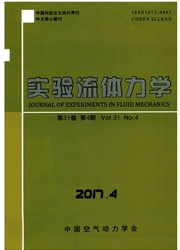

 中文摘要:
中文摘要:
微纳米实验流体力学研究的流动特征尺度在1mm~1nm范围,处于宏观流动到分子运动的过渡区。连续介质力学与量子力学这两个经典理论的衔接,提出了诸如连续性假设适用性、边界滑移等基本理论问题。同时从微纳米尺度研究界面处液/固/气的耦合,化学、电学性质对流动的影响值得关注。微纳米实验测量仪器融入了力、电等测量手段,要求测量空间精度达到nm量级,力的测量精度达到pN,时间分辨率达到ns。本文围绕连续性假设适用性、边界滑移、微纳米粒子布朗运动及微尺度涡旋测量等问题,介绍了 Micro/Nano PIV、示踪粒子流场显示等技术应用于微纳流场观测的进展与难点。目前微纳米流动测量仍然沿着经典流体力学测量“小型化”的思路开展,而纳尺度的测量期待着新的实验方法与技术的提出。
 英文摘要:
英文摘要:
The micro/nanoscale experimental fluid mechanics studies the fluid flow with the typical dimension from about 1mm to 1nm,which is also the transition range from the macro-scopic flow to molecular motion.The combination of the two classical theories:the continuum mechanics and the quantum mechanics,pusts forward some basic theoretical problems like the validity of the continuity hypothesis and the boundary slip.In the mean time,due to the coupling of the liquid/solid/gas phases in micro/nanoscale,it is worthy considering the influence of inter-facial chemistry and electric properties on the flow.Therefore,micro/nano experimental devices should integrate force and electricity measurements,and require a nanometer measuring space resolution,a pN force precision and a nano-second time resolution.This paper focuses on the problems of validity of the continuity hypothesis,boundary slip,Brownian motion of micro/nano-particles and micro-vortex flow,and introduces the progresses and difficulties of micro/nano flow measurement by Micro/Nano PIV and micro/nanoscale flow visualization using trac-ers.Up to date,the study of micro/nano flow is still following the idea of “miniaturization”of the classical fluid mechanics measurement,however,the nano flow measurement urgently needs new techniques and methods.
 同期刊论文项目
同期刊论文项目
 同项目期刊论文
同项目期刊论文
 Simulation of diffusiophoresis force and the confinement effect of Janus particles with the continuu
Simulation of diffusiophoresis force and the confinement effect of Janus particles with the continuu Visualization and measurement of the self-propelled and rotational motion of the Janus microparticle
Visualization and measurement of the self-propelled and rotational motion of the Janus microparticle 期刊信息
期刊信息
